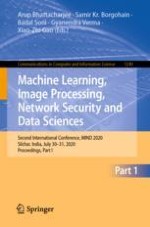2020 | OriginalPaper | Buchkapitel
5W1H-Based Semantic Segmentation of Tweets for Event Detection Using BERT
verfasst von : Kunal Chakma, Steve Durairaj Swamy, Amitava Das, Swapan Debbarma
Erschienen in: Machine Learning, Image Processing, Network Security and Data Sciences
Verlag: Springer Singapore
Aktivieren Sie unsere intelligente Suche, um passende Fachinhalte oder Patente zu finden.
Wählen Sie Textabschnitte aus um mit Künstlicher Intelligenz passenden Patente zu finden. powered by
Markieren Sie Textabschnitte, um KI-gestützt weitere passende Inhalte zu finden. powered by
